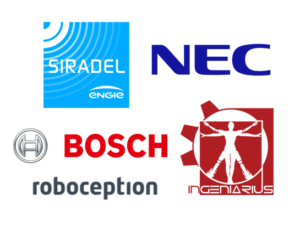
Keep up to date with our innovative initiatives.
Sign up here

Started at: 01-03-2021
Ends on: 28-02-2025
Budget: € 3,671,943.48
Areas: Mobile and Wireless Internet and Software Networks
The transition into the 4th industrial revolution promises to integrate IoT and cyber-physical systems into the industrial domain and to boost the productivity of industrial verticals thanks to radical automation of all the phases of production. Communications are key to enabling i4.0 but are subject to the stringent requirements of automated applications in terms of availability, reliability, low latency, integrity, scalability, safety, and positioning accuracy. A wirelessly connected factory enables novel mobile robots, easy reconfiguration of assembly lines and migration of embedded control functions to the virtually infinite computational/cache resources and flexibility of edge clouds. From a managerial perspective, the integrated billing, and tracking capabilities of 5G facilitate novel models such as that can drive a business disruption. As a result, the i4.0 ecosystem is an opportunity for the wireless community and has become one of the key targets of 5G. From a technical side, the development of wireless i4.0 entails a paradigm shift from reactive and centralized networks towards massive, ultra-reliable and proactive networks that may operate in wide remote scenarios, with thousands of devices, uncertainty, high dynamics, rare events, unpredictable interference, and harsh conditions. Merging 5G networks and i4.0 comes with its own difficulties because these two domains have been disjointed so far. Here is the key opening identified by 5GSmartFact: the need for a surge of skilled researchers and engineers in the upcoming years to work at the crossroads of factory automation and 5G evolutions. Having this in mind, the objective of the research programme is to train young researchers to be able to analyse, design, develop and assess the deployment of 5G networks that target the i4.0 requirements and exploit them to integrate current robot applications which might lead to a complete redesign of robot architectures and hence to a leap forward in the automation industry.
5GSmartFact has to define a set of holistic and transversal research challenges that represent the radical paradigm push required in 5G evolutions to support the future i4.0. Availability, latency, and reliability are complex concepts that embrace many aspects of a wireless communication system. Without being exhaustive, latency is influenced by the over-the-air transmit delay, queuing delay, processing time, accessibility of data close to where it is needed and can be defined end-to-end, at the control plane or the data plane. Reliability is affected by the availability of resources, collisions, interference, uncertainty in the channel state, coverage, coding, packet drops, etc. Taking all aspects into consideration, the challenges have to address the following transversal network-wide objectives:



5GSmartFact has received funding from the European Union's Horizon 2020 research and innovation programme under the Marie Skłodowska-Curie grant agreement ID 956670